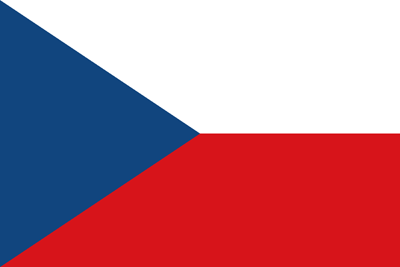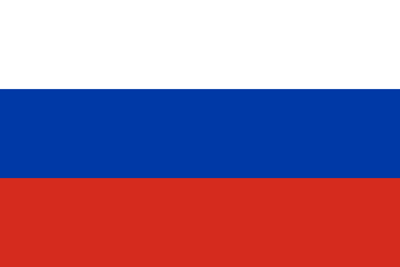Municipal Autonomous General Education Institution "Lyceum No. 4"
of the Municipal Formation of the City of Cheboksary — the Capital of the Chuvash Republic
"Reviewed"
Head of the Methodological Council
MAOE "Lyceum No. 4"
City of Cheboksary
_____ /______________ /
Protocol No. ____ dated
"___" __________ 2011
"Agreed"
Deputy Director for Academic Affairs
MAOE "Lyceum No. 4"
City of Cheboksary
_____ /______________ /
"___" __________ 2011
"Approved"
Director
MAOE "Lyceum No. 4"
City of Cheboksary
_____ /KONOVALOVA N.V./
Order No. _______ dated
"___" __________ 2011
WORKING CURRICULUM
in Chemistry for 9th Grade Students
Implementation period: 2011–2012 academic year
The program is based on:
"Chemistry Course Program for Grades 8–11 of General Education Institutions"
by Yeremin V.V., Kuzmenko N.E., Lunin V.V., Drozdov A.A., Terenin V.I. – Moscow: Drofa, 2008.
Textbook (title, authors, publisher, year):
"Chemistry", Yeremin V.V., Kuzmenko N.E., Lunin V.V., Drozdov A.A., Terenin V.I. – Moscow: Drofa, 2008.
Compiled by:
Teacher – Lapteva Evgenia Pavlovna, Highest Qualification Category
Number of hours:
| Grade | Hours per week | Hours per year | Reserve hours |
|---|---|---|---|
| 9 | 2 | 68 | 2 |
EXPLANATORY NOTE
In the system of natural science education, chemistry as a subject plays an important role in understanding the laws of nature, the material life of society, solving global human problems, forming a scientific worldview, and fostering ecological awareness.
Objective of the subject implementation:
To equip students with the foundations of chemical knowledge necessary for daily life, lay the groundwork for further deepening of chemical knowledge in senior classes, and guide students' behavior in their environment.
Learning objectives of chemistry:
-
To form student knowledge of the fundamentals of chemical science: key facts, concepts, chemical laws and theories, the language of science, and accessible generalizations of a worldview nature.
-
To develop skills to observe and explain chemical phenomena occurring in nature, the laboratory, and everyday life.
-
To develop specific skills: handling substances, conducting simple experiments following safety rules; applying chemical knowledge responsibly in interacting with nature and everyday life.
-
To reveal the humanistic orientation of chemistry, its increasing role in solving key human challenges, and its contribution to global scientific culture.
-
To foster personal development: intellectual and moral growth, humanistic attitudes, and environmentally appropriate behavior at home and in work activities.
The role of the subject in forming core knowledge, skills, and key competencies:
This working curriculum is based on:
"Chemistry Course Program for Grades 8–11 of General Education Institutions"
by Yeremin V.V., Kuzmenko N.E., Lunin V.V., Drozdov A.A., Terenin V.I. – Moscow: Drofa, 2008.
This program is implemented using the textbook:
Yeremin V.V., Kuzmenko N.E., Lunin V.V., Drozdov A.A. Chemistry. Grade 9. – Moscow: Drofa, 2008.
Distinctions of the working curriculum from the standard model:
-
Increased the number of hours (by 1 hour) for Topic 2. Chemical Reactions, due to extended time on Electrolysis, as this is a complex topic included in all final certification tests (Unified State Exam and Regional Monitoring).
-
Topic 3. Chemistry of Nonmetals: Added a practical lab — "Properties of Dilute and Concentrated Sulfuric Acid" to develop students' experimental skills and safety awareness when working with concentrated substances.
-
Topic 4. Chemistry of Metals: Added the concept of "Water Hardness" as it is essential for students’ daily life.
-
At the end of the year: Added Subject Competency Reinforcement (2 hours) for review, generalization, and evaluation of knowledge and skills acquired during the academic year.
Thematic Plan
| No. | Sections / Topics | Hours for: |
|---|---|---|
| New Material & Practice | ||
| 1. | Stoichiometry. Quantitative Relations | 12 |
| 2. | Chemical Reactions | 15 |
| 3. | Chemistry of Nonmetals | 20 |
| 4. | Chemistry of Metals | 12 |
| 5. | Fundamentals of Organic Chemistry | 7 |
| 6. | Reserve | 2 |
| Total: | 68 |
Interdisciplinary Links:
-
Mathematics – when solving problems
-
Physics – while studying molecular and atomic structure, physical properties of substances
-
Biology – understanding the role of chemical elements and compounds in living organisms, their impact on health
-
Ecology – for forming humanistic attitudes and environmentally appropriate behavior
-
Geography – location and practical uses of chemical elements and compounds in nature, economic aspects of industrial placement
-
Technology – food chemistry, safety rules, etc.
Student Learning Outcomes
By the end of Grade 9, students should know and understand:
-
Chemical symbols: element symbols, chemical formulas, and reaction equations
-
Key chemical concepts: element, atom, molecule, relative atomic and molecular masses, ion, chemical bond, substance classification, mole, molar mass, molar volume, chemical reaction, reaction classification, oxidation state, valency, oxidizer, reducer, oxidation, reduction, electrolyte, non-electrolyte, electrolytic dissociation
-
Basic chemical laws: Law of Conservation of Mass, Law of Constant Composition, Periodic Law
Be able to:
-
Name chemical elements and compounds studied
-
Explain:
-
The meaning of atomic (ordinal) number, group and period numbers in the Periodic Table
-
Trends of element properties across periods and groups
-
Nature of ion-exchange reactions
-
-
Characterize elements (from Hydrogen to Calcium) based on their Periodic Table positions and atomic structures
-
Describe chemical properties of main classes of inorganic compounds
-
Determine:
-
Composition of substances from formulas
-
Substance class
-
Reaction types
-
Valency and oxidation states
-
Type of chemical bond
-
Possibility of ion-exchange reactions
-
-
Write:
-
Formulas for inorganic compounds
-
Atomic structure diagrams for the first 20 elements
-
Chemical reaction equations
-
-
Handle chemical glassware and lab equipment
-
Identify experimentally: oxygen, hydrogen, acid and alkali solutions, chloride, sulfate, carbonate ions
-
Calculate:
-
Mass percent of an element in a substance
-
Mass percent of a substance in a solution
-
Amount of substance, volume or mass from given data
-
-
Apply knowledge and skills in daily and practical life for:
-
Safe handling of substances and materials
-
Environmentally responsible behavior
-
Assessing the impact of chemical pollution on health
-
Critically evaluating information about household chemicals
-
Preparing solutions of specific concentrations
-
Forms of Knowledge and Skill Assessment (ZUN):
Part 2. Topic 5. Algorithm for Writing Redox Reaction Equations
Fostering Socialization and Preserving National Traditions Through Cultural Play in Primary Education
The Cossack and the Easter Bread
"Pedagogical Living Room Sessions: Community Circles of Educators 'Learning Together'"

 Deutsch
Deutsch
 Francais
Francais
 Nederlands
Nederlands
 Svenska
Svenska
 Norsk
Norsk
 Dansk
Dansk
 Suomi
Suomi
 Espanol
Espanol
 Italiano
Italiano
 Portugues
Portugues
 Magyar
Magyar
 Polski
Polski
 Cestina
Cestina
 Русский
Русский